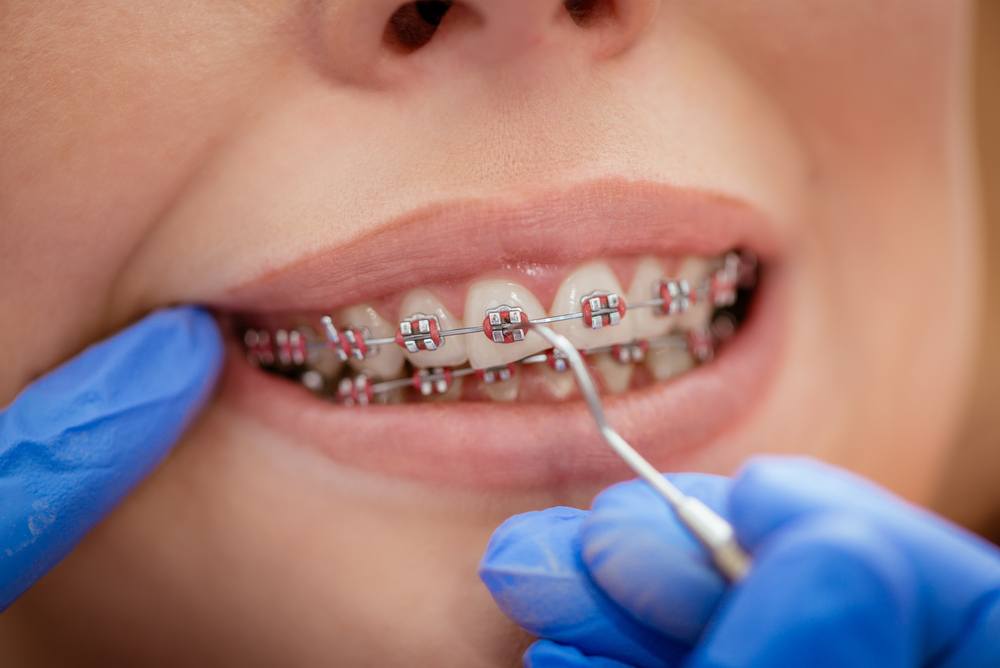What Sets Cumming Braces and Aligners Aside From Other Orthodontic Treatments
Comprehensive Guide to Orthodontics Procedures for Correcting Dental Imbalances
Comprehending the complexities of each procedure, including their mechanisms, advantages, and possible disadvantages, is vital in making notified choices regarding one's orthodontic treatment. As we navigate through the comprehensive guide to orthodontic procedures for correcting dental misalignments, the elaborate details of each method will unfold, losing light on the course towards a unified and useful oral positioning.
Orthodontic Procedures Introduction

In enhancement to conventional dental braces and clear aligners, orthodontists might additionally recommend various other interventions like headgear, palatal expanders, or retainers to resolve particular placement issues (cumming orthodontist). These treatments are tailored to every person's distinct demands and might involve a combination of therapies to achieve the preferred outcomes. Regular modifications and surveillance are essential components of orthodontic therapy to guarantee development gets on track and to make any required adjustments in the process. By undergoing orthodontic procedures, individuals can not just achieve a straighter smile but likewise enhance their total dental health and feature.
Traditional Braces: How They Work
When taking into consideration orthodontic treatments for oral misalignments, conventional dental braces stand out as a time-tested technique for dealing with teeth positioning. Standard dental braces are composed of brackets, cables, and bands that function together to apply constant stress on the teeth, gradually moving them right into the wanted alignment.
One secret facet of how conventional dental braces work is the process of bone makeover. As pressure is applied to the teeth via the dental braces, the bone surrounding the teeth is improved to sustain the new tooth placements. This renovation is essential for the long-lasting security of the fixed placement. Patients will need normal adjustments at the orthodontist's office to make certain the braces proceed to apply the right pressure for efficient teeth movement.
Unseen Aligners: Cons and pros
Invisible aligners provide a practical and discreet alternative to typical braces for fixing dental imbalances. These clear, personalized trays are basically unseen when put on, making them an attractive option for individuals looking for a much more aesthetically pleasing orthodontic treatment. Among the main advantages of unseen aligners is their removability, permitting much easier maintenance of dental hygiene compared to typical dental braces. Patients can get rid of the aligners prior to eating or cleaning their teeth, minimizing the risk of food obtaining stuck in the appliance and streamlining the cleansing procedure.

Surgical Orthodontic Options
Surgical interventions in orthodontics existing viable choices for dealing with intricate oral misalignments that may not be successfully settled with traditional orthodontic treatments. While unseen aligners and typical dental braces can remedy numerous orthodontic issues, specific situations need medical treatment to accomplish optimum outcomes. Surgical orthodontic options are commonly recommended for severe malocclusions, substantial jaw inconsistencies, and instances where the underlying bone structure requires alteration to accomplish proper positioning.
One common surgical orthodontic treatment is orthognathic surgical procedure, which entails rearranging the jaws to remedy useful issues such as problem speaking or chewing. This surgery is usually carried out in cooperation with an orthodontist that helps align the teeth before and after the procedure. Surgical orthodontics might additionally entail procedures to expose impacted teeth, eliminate excess gum cells, or improve the jawbone to develop a more unified facial profile.
Before thinking about medical orthodontic options, individuals undertake a detailed evaluation to establish the requirement and possible benefits of such interventions. invisalign. While surgical procedure may appear challenging, it can substantially boost both the feature and aesthetics of the smile in situations where conventional orthodontic therapies fail
Retainers and Post-Treatment Treatment

Failing to comply with post-treatment treatment guidelines can result in regression, where the teeth slowly move back towards their original placements. Consistent retainer wear, good dental health, and routine dental check-ups are essential for maintaining the outcomes accomplished with orthodontic surgical treatment and guaranteeing the long-term stability of cosmetic dental care the dealt with oral alignment.
Conclusion
To conclude, orthodontic treatments use different options for correcting oral imbalances. Conventional dental braces make use of metal braces and cords to move teeth into correct positioning. Unnoticeable aligners provide an even more discreet choice but might not be ideal for all instances. Surgical orthodontic options are readily available for extra severe imbalances. Retainers are commonly utilized post-treatment to keep the new alignment. Generally, orthodontic procedures can properly enhance oral health and wellness and aesthetic appearance.
As we navigate with the thorough guide to orthodontic procedures for remedying oral misalignments, the complex details of each technique will certainly unfold, shedding light on the course towards a practical and unified oral alignment. - invisalign
One of the most usual orthodontic therapies is the use of braces, which consist of blog here steel braces and wires that use mild stress to progressively shift teeth into the desired setting.When taking into consideration orthodontic therapies for dental misalignments, conventional braces stand out as a tried and true approach for dealing with teeth placing. Additionally, unnoticeable aligners may not be appropriate for intricate orthodontic concerns that call for even more substantial teeth activity, as they are typically recommended for mild to moderate cases. Retainers are tailor-made orthodontic gadgets created to hold teeth in their remedied positions after the completion of orthodontic treatment.